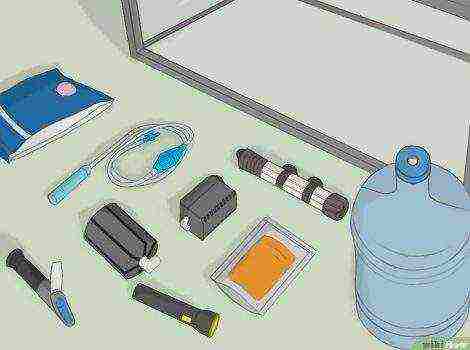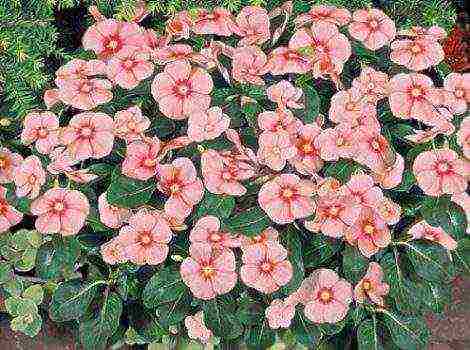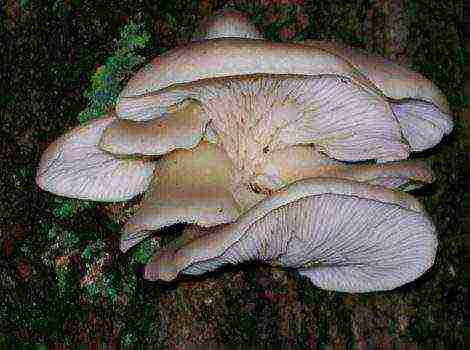Content [show]
Strawberries can be found growing in tall pyramids in car tires and homemade vertical crates. Today we will talk about one of the most modern methods - growing strawberries in horizontal PVC pipes. What are the advantages of this method?
Strawberries in PVC pipes
- Mobility... The design has no connection to the installation site. PVC pipes can be placed in the greenhouse and on the balcony, in the garden bed and next to the flower garden. It can be transferred not only in the spring before planting seedlings, but also during active vegetation or fruiting.
- Minimal waste of time for soil preparation and plant care... In this article, we will look at the method of growing not only in soil, but also hydroponically. The second option generally excludes the use of soil in the usual sense for most gardeners.
- Possibility of maximum automation of the growing process... Moreover, this automation can be done independently, it will cost very cheaply, and in terms of efficiency it is in no way inferior to industrial counterparts.
- Berries are clean, do not have direct contact with the ground, do not rot, do not lose their presentation.
- Another plus - harvest time significantly increases.
Let's talk about hydroponic first, and then about the usual way.
What is hydroponics
Diagram of an ejector hydroponic installation
Even without knowing anything about this "supernova" technology, most housewives have been doing it for decades. A striking example is growing onions on a windowsill in a container with ordinary water. Some even put special nutritious baits into the water and thus move on to the next stage of hydroponics - intensive cultivation of crops. The conquerors of outer space also have high hopes for hydroponics. This is the only way to independently replenish food reserves during long space flights.
Installation diagram
We warn you right away that only remontant strawberries are suitable for hydroponics, these varieties can produce crops all year round. Professionals recommend growing "Queen Elizabeth", "Elvira", "Yellow Miracle", "Vima Zanta" and other high-yielding varieties resistant to diseases.
Strawberry "Yellow Miracle"
Garden strawberry "Vima Zanta"
Plants during hydroponic cultivation take nutrients only from water, the soil is completely absent. What does the system look like? This is a container (in our case, made of PVC plastic pipes), in which water with mineral fertilizers, micro- and macro-additives is constantly circulating. Plants are located in small plastic pots; pebbles or expanded clay can be placed on the bottom of the pots to increase stability.
Practical advice. To increase efficiency, it is better to grind expanded clay with a hammer. In this state, the root system of plants feels better, and expanded clay can give them moisture and nutrients for a longer time.
The water circulates in the pipes; you can use a small aquarium pump for the pump. If there are a lot of pipes and they are located in several tiers in height, then a more powerful pump must be installed.
Top dressing is added to the water, the enriched water moves in a closed loop, the drain is discharged into a separate container, and a fence is made from it. You need to know about one feature of expanded clay - it has carbamide salts, which create an alkaline environment in the system. And strawberries love slightly acidic soil, to normalize the growing conditions, expanded clay is first thoroughly washed, and then soaked in a weak solution of vinegar. There are recommendations to replace expanded clay with coconut fiber, but this pleasure is quite expensive.
Technology for growing strawberries in horizontal PVC pipes using a hydroponic method
Hydroponics allows you to grow berries in a landless way
Sewer pipes Ø 100–150 mm are best suited for these purposes, they have standard fully sealed plugs, which is very important for the chosen method. For the production of work, you will need a disk cylindrical grinder, a drill, lengths of pipes Ø 20–25 mm, plastic squares, a container for drainage and a pump for water supply.
Materials for making a hydroponic plant
Step 1. Decide on the location of the pipes and their number. The technical data of the pump and the list of additional plumbing fittings will depend on these parameters.
Step 2. Draw a straight line on the surface of the pipe, on this axis you need to drill holes for the pots. The diameter of the peas should be slightly larger than the diameter of the holes, they should be fixed in them, but not fall through. You can put pots on the bottom of the pipe, but this option will create significant obstacles to water circulation. The distance between the holes is within 15 cm.
Drilling holes in the pipe for the pots
Step 3. Prepare the end caps for the elbow pipes. Quite a complicated process, it requires skill and practical skills. The bends of the water supply / drain pipes must be glued to the plugs. To do this, drill holes 1–2 mm in diameter smaller than the outer diameter of the pipes. Carefully clean the cut area, remove all burrs and irregularities. Heat the branch pipe with a construction hair dryer or in boiling water, the end should be plastic, but not very soft. Next, forcefully insert the pipe into the hole and hold it in this position until it cools completely. For complete sealing, the joint must be additionally glued with thermoactive or thermoplastic glue, preferably two-component.
In this hydroponics design, water is supplied to each pipe separately using thin tubes.
Step 4. Two such plugs need to be prepared for each pipe. Install them on pipes suspended above each other in the form of a ladder. Using a piece of Ø 20–25 mm and corners, connect all pipes in series, the outlet must be in a special container, the inlet is adapted to the pump connection. How to do this depends on the specific brand of the unit.
Complete system
Pipes can be arranged in one row
Step 5. Pour ordinary water into the system and check all connections for leaks. If leaks are found, repair the problem areas.
Strawberries in tubes
Plant for growing strawberries
Water should not circulate in the system continuously, it is enough to turn on the pump two or three times a day for half an hour. In order to ensure the automatic operation of the system, it is recommended to purchase a time timer, it costs a penny, but it works very reliably.
Features of growing strawberries in hydroponics
Hydroponic strawberry tips
- A high yield of strawberries cannot be achieved without the use of a special nutrient solution, additives of macro- and microelements. If expanded clay is poured into the pots, it is recommended to periodically check the acidity level, the optimal values are 5.8–6.2.
Hydroponic nutrient solution
- When choosing a water pump, you need to pay attention to its technical characteristics, including power, performance and maximum lift. Always have a margin for these indicators. Firstly, there will be no problem in the case of an increase in the number of pipes. Secondly, any equipment operating at maximum capacities quickly fails - winding insulation overheats, oil seals and bearings wear out, etc.
Solution compressors
- The microclimate is considered optimal for plants with an air temperature of + 25 ° С during the day and + 18 ° С at night with a humidity of 65–75%. If the daylight hours are short, then be sure to use backlighting. During the period of active vegetation and ripening of fruits, the duration of daylight hours should not be less than 12 hours.
As for the issues of growing seedlings, the usual technology is used, the planting time depends on the characteristics of the premises (heated or not) and the climatic zone of residence.
How to build a hydroponic plant
Growing strawberries horizontally in pipes using soil
The preparation of plastic pipes differs from the above method. This is due to the fact that now not water circulates in them, but there is a nutritious soil, plants are planted in it, and not in pots. How to prepare a construct for this method?
Step 1. Cut the pipes to the required length, make markings for the holes. If there is no drill with a large-diameter crown for drilling them, then the holes can be made with a grinder. They may not be exactly the same, the main thing is not to interfere with planting strawberry seedlings. The distance between plants is within 15 cm, the diameter of the holes in the pipes is ≈5 cm, the diameter of the pipes is 100–150 mm. You will need plugs on both sides, you can purchase them or make them yourself. It is difficult to make plugs - take a piece of plastic wrap and tie it around the ends of the pipes, wrap the edges tightly with wire or rope.
Drilling holes for pots
Step 2... Prepare pipes of a smaller diameter for the arrangement of the irrigation system. The length of such pipes should be 10-15 cm longer than the length of large ones with plants; water supply hoses will be connected to the ends. It is necessary to drill holes in them at a distance of 10-15 cm Ø 2-3 mm. Water will flow through these holes. To prevent the holes from clogging up with earth, wrap the pipe with geotextile or non-woven synthetic fiber, secure it with wire.
The photo shows an example of the organization of drip irrigation
Step 3. Make holes in the plugs for small diameter pipes. It is possible not to seal it, as in the previous case. On the other plug, holes must be drilled to drain excess water.
Step 4. Make special structures for attaching horizontal pipes, think over a water supply system. You can use a pump, set a timer on it and make watering automated, or you can put any container a little higher than the pipes and water the plants by gravity. Everyone should choose the most acceptable option for themselves, taking into account the possibilities and desires.
How to prepare pipes for planting strawberries
Quite a laborious operation. For backfill, expanded clay should be prepared (it will play the role of drainage) and fertile soil (it is better to purchase a ready-made substrate in a specialized store). Keep in mind that expanded clay reduces acidity, and strawberries do not like this. Use the above tips to eliminate this feature. When all the structural elements are ready, you can start filling them.
Step 1. Lay the pipes horizontally on a flat surface. Pour expanded clay into them in turn through each hole.The thickness of the layer should not exceed 2–3 cm; use a stick or other convenient object to level it with the same layer along the entire length of the pipe.
Step 2. Place a smaller diameter pipe prepared for irrigation on expanded clay. Note that the drilled holes are at the top.
Step 3. Pour earth into each hole in turn. Constantly level and tamp it, water abundantly for better shrinkage. Backfilling is a rather lengthy undertaking, but it should be treated with great responsibility. If the soil is poured loosely, then over time it will shrink, which will have an extremely negative effect on the final yield of strawberries.
Construction example
All pipes are filled with earth - you can install them in place and connect the irrigation system. The seedlings are handled as usual, the agricultural technology does not differ from the cultivation of strawberries in greenhouses.
Hydroponic plant
Hydroponic strawberries
A few practical tips
It is rather difficult and long to fill up the soil into the pipes; during the cultivation of strawberries, all measures must be taken to prevent its contamination. Otherwise, you will very often have to disassemble the entire structure and start preparing it for planting seedlings from the beginning. How to minimize the risks of contamination of the substrate?
- Always grow your own strawberry seedlings. Almost one hundred percent of specialized agricultural enterprises have contaminated soils, diseases will quickly appear on your beds.
Strawberry seedlings
- For reinsurance, it is strongly recommended to decontaminate even purchased mixtures. For this, you can use both industrial drugs and traditional methods.
Disinfect strawberry seeds with potassium permanganate or another preparation
- As soon as a diseased plant is found, immediately remove it along with the soil. Wear gloves and do preventive chemical treatments if possible.
Sick plant
Do not be discouraged if the first season is not very successful, you are just gaining experience. Next year you will have an excellent strawberry harvest, it takes almost no time and physical effort to grow it. Practitioners advise to first try two growing methods at the same time: hydroponic and ordinary. With which it will work better, that one can be expanded for the next season.
First strawberry harvest
Video - Growing strawberries in PVC pipes horizontally
The year-round cultivation of strawberries in a greenhouse pays off only with high yields, and they need decent territories. To reduce the area allotted for strawberries, without losing efficiency, a horizontal structure made of PVC pipes will allow.
Growing strawberries (garden strawberries) in pipes is suitable not only for those who do it for profit, but also for ordinary summer residents. After all, the construction of pipes almost does not take up space and is easy to carry, which means it becomes an additional bed, without taking away precious meters, which are already few in a standard dacha.
How to make a tube structure for strawberries
The main time in the process of such planting of strawberries is taken by the collection and preparation of a horizontal structure from pipes. In order to make it, you will need not only the pipes themselves, but also certain tools:
- PVC pipes with a diameter of 15 cm (sewer pipes);
- end caps with a diameter of 15 cm (2 pieces for each pipe);
- PVC pipes with a diameter of 3-4 cm for cold water (their length should be 10-15 cm longer than wide pipes);
- end caps with a diameter of 3-4 cm (1 piece for each pipe);
- a piece of hose for water drainage;
- water tanks;
- a pump with a timer (sensor) for autowatering;
- expanded clay for drainage;
- priming;
- drill with a crown with a diameter of 10 cm;
- hacksaw;
- roulette.
It is better to crush expanded clay with a hammer into small pieces, so it will be more comfortable for the strawberry roots to grow.
Before you start making a structure, decide on its shape, size and installation location. Single pipes can be attached to a fence, but choose one that gets the sun most of the day.
If you decide to create a real strawberry complex, then first build pipe supports. They can be in the form of a pyramid or gable, but remember that a pipe with soil 2 m long weighs more than 25 kg, so the supports must be strong.
The pipe preparation process itself looks like this:
- In a wide pipe on one side, cut several holes 10-15 cm in diameter at a distance of 15 cm from each other.
- In a thin pipe, drill many holes on all sides with a drill without a nozzle.
- Wrap a thin pipe with geotextile or agrofiber and secure it with wire so that it does not slip or unwind.
- In the wide plugs on both sides, drill holes to the diameter of the thin pipe.
- At the bottom of a wide pipe, pour a layer of expanded clay 2-3 cm thick and distribute it evenly along the entire length.
- Lay thin pipes on expanded clay so that their ends go out into the holes you drilled in the plugs.
- Pour the prepared soil through the slots in the upper part of the wide pipe, distribute it evenly, tamp and pour it.
- Connect a timer irrigation hose or container of water above the level of the pipes to one side of the pipe, and a hose to drain excess fluid on the other. If there are several pipes in your system, connect them in series with this hose so that the water from the tank enters all the pipes in turn.
Many gardeners reasonably believe that this technology is too expensive, and such a bed will not pay off soon. However, there are ways that allow you to save a lot when constructing a system of PVC pipes, without losing the effectiveness and main advantages.
By removing parts of the system, you turn automated processes into manual ones, so this is only worth doing on small beds. On a strawberry plantation set up for business, these methods will no longer work.
To reduce the cost of the system, you can:
- do not install internal pipes for drip irrigation, but water the strawberries by hand;
- do not buy plugs for pipes, but hew them out of wood and put them on "liquid nails" or wrap the ends of the pipes with foil and secure with wire;
- do not make a system for draining excess water, but drill holes with a diameter of 5 mm in the bottom of the pipe at a distance of 25 cm from each other;
- do not buy ready-made soil, but prepare it yourself from low-lying peat, humus and river sand, mixed in equal proportions.
An experienced gardener will tell you how to make an economical hanging bed for strawberries from PVC pipes and plant bushes in it.
How to plant strawberries in PVC pipes
Now that the design is ready, it's time to plant the strawberries. It is carried out quite simply:
- Make grooves about 10 cm in the prepared soil.
- Soak strawberry seedlings for 12 hours in a solution of Kornevin, Heteroauxin or any other root formation stimulator.
- Place the seedlings in the indentations, spreading the roots evenly and sprinkling them with soil.
- Water the freshly planted bushes and shade them slightly from direct sunlight for the first week.
Planting strawberry seedlings in a PVC pipe has its own characteristics, and which are described in this video.
Expanded clay always alkalizes the soil, and garden strawberries prefers slightly acidic soil. To solve this problem, the expanded clay must be soaked in a weak vinegar solution for 12 hours before use.
Care for strawberries in PVC pipes
Strawberries grown on overhead ridges have a number of advantages over their outdoor counterparts. It is not drowned out by weeds, it does not have to be loosened, and it is reliably "insured" from all pests crawling on the ground.
However, diseases attack it even more, besides, the soil in the pipes quickly dries up and is depleted.Therefore, the worries of the summer resident do not disappear, but only shift to another area. So what do you need to do to prevent the strawberries from dying in your pipes?
- Water regularly, preventing the soil from drying out. It is ideal to automate the drip irrigation system, but if this is not possible, manually check the soil moisture daily.
- Once every two weeks, feed the strawberries with a solution of complex fertilizer specifically for this crop.
- At the first signs of the disease, remove the affected bushes and soil from under them.
You can protect yourself from acquiring sick seedlings by growing it yourself. To do this, create a separate uterine ridge, on which all the forces of the strawberry bushes of your favorite variety are directed not at fruiting, but at the formation of "mustaches".
Wintering strawberries in PVC pipes
For a long time, the main difficulty in growing strawberries in horizontal PVC pipes was the organization of wintering. You cannot leave strawberries on the street - they will freeze and die, and not everyone has greenhouses for year-round cultivation.
However, a solution has been found, and it is not so difficult. With the onset of stable negative temperatures, pipes with strawberries are wrapped in 2-3 layers of spunbond of a category 60 g / m2. When the frosts become more severe, and the temperature drops below –20 ° C, the pipes are wrapped in another layer, but not each one individually, but all together.
Pros and cons of growing strawberries in PVC pipes
Each new technology has its positive and negative sides and, of course, supporters and opponents. If you look objectively at the cultivation of garden strawberries in pipes, the following advantages can be noted:
- saving space, the ability to grow strawberries in any part of the site or on the balcony;
- mobility of the structure;
- clean and healthy fruits that are not in contact with the ground;
- inaccessibility to slugs;
- the possibility of year-round cultivation;
- no weeds and no need for weeding.
But this technology has noticeable disadvantages:
- significant money and time costs for the creation of the structure itself;
- regular depletion of the soil and the need for frequent fertilizing;
- alkalization of soil from expanded clay;
- difficulties with the insulation of the structure for the winter with seasonal (street) cultivation.
The first season of growing strawberries in a new way is often not very successful, but do not despair. Take into account all the mistakes and be sure that next year everything will work out.
Everyone who has a vegetable garden or summer cottage knows how difficult it can be to grow large sweet strawberries. We wait all winter for the long-awaited summer to feast on the berry. But often our expectations are in vain: the summer is cold, there is no sun, the rains are heavy, the fruits are rotting. Sometimes the crop is attacked by various insects. Desperate gardeners use all kinds of methods to overcome all adversity. Today we will look at the most creative method of growing berries. Many have not heard of this at all. Let's try to grow strawberries in a tube. Yes, you heard right, it was in her. To do this, you do not need to carry huge, heavy metal pipes to the site. We need strong plastic ones in which we will learn to plant our berries. From the article you will learn how to properly plant and care for strawberries, and we will also present the most common varieties of berries that will get along well in such unusual beds. So, first things first.
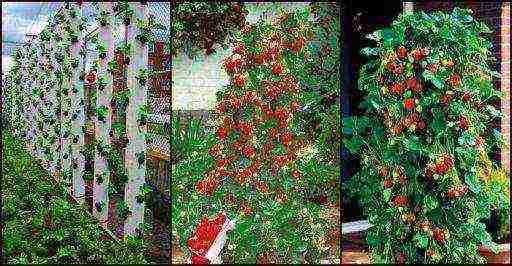
Method advantages
Before we start with you to understand the main question (how to grow strawberries in plastic pipes), it is worth talking about all the advantages of the method. Let's start with the most important thing.
- If your area is small, then this method is best suited. These ridges take up very little space, and where you used to grow strawberries, you can plant something else.
- The structure can always be moved from place to place.
- It is not necessary to process a large amount of soil from constantly appearing weeds.
- It is convenient to harvest a ripe crop.
- Growing berries in pipes look aesthetically pleasing and beautiful. They will delight your eyes. Such structures will become the main highlight of the garden and your pride.
It is worth considering in detail what materials are best prepared in order to grow strawberries in a pipe.
Preparing for landing
It is worth talking about what needs to be purchased to translate such an idea into reality. Here is a detailed checklist.
- It is necessary to purchase plastic pipes. Some of them should be wide in diameter, others narrow. Water will pass through them and through them it will be supplied to the roots of plants.
- Plugs.
- A drill is needed to make holes in the pipe. It is advisable that you have a special wide nozzle available for the instrument.
- Fasteners.
- Rope.
- Expanded clay. It is needed to make drainage.
- Soil for planting.
- Seedlings of berries.
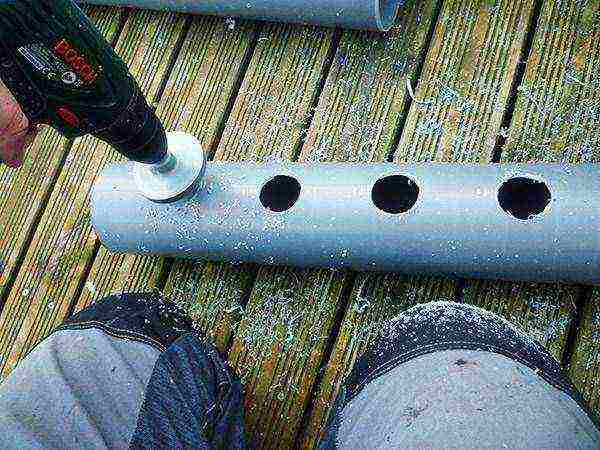
Self-production of beds
Now we turn to the manufacture of the structure itself, which needs to be done before growing strawberries in PVC pipes. It is worth clarifying here that the pipes can be placed both horizontally and vertically. We will pay attention to the second type of beds. We begin preparation according to the following algorithm.
- We cut the pipe to the length that you need for the garden bed.
- On one side, we install a plug. It will help keep the soil in the pipe.
- Now, on our narrow workpiece, every 10 cm we make small holes using a drill. In total, you should have three rows of them.
- The workpiece intended for irrigation is secured with a rope inside a large pipe.
- Now, in our makeshift bed, we need to make holes in order for the strawberries to sit comfortably in the pipe. You will grow it here.
- In the place you have chosen, you need to install the pipes in an upright position. Be sure to secure them so that your beds do not fall from a strong gust of wind.
- Now we start to fill the wide pipe with earth.
- Above all, set your beds on the sunny side so that the strawberries ripen well.
To move on to the question of how to grow strawberries in a vertical pipe, you need to know how to plant them correctly, and for this it is worth choosing good varieties of berries.
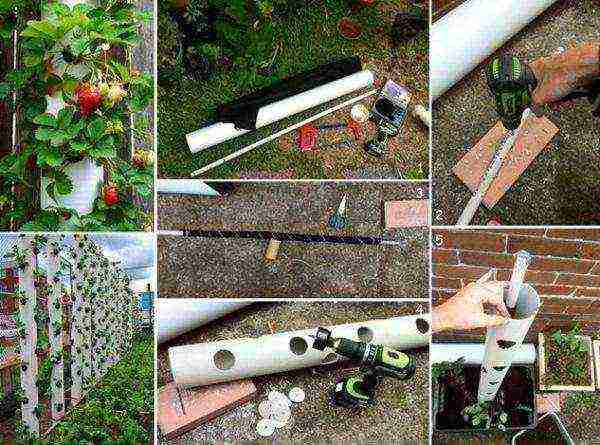
The best varieties of berries for planting in pipes
Curly strawberries are suitable for this growing method. Here are the brightest representatives of this variety.
- Queen Elizabeth. Refers to a remontant type. You can harvest several times in one summer. From one bush, you can get about 2 kg of juicy and fleshy berries.
- Elizabeth the Second. Another representative of the remontant species. The berries are large, bright red. The very first crop can be harvested in mid-May. During the summer period, in total, you can get about 12 kg of berries.
- Alba. This is an early maturing variety. The berry tolerates all cold snaps and frosts well. One bush can be harvested about 1.5 kg.
- Delicacy. Repaired strawberry with a long peduncle. You can easily harvest from it. Ripe berries are dark red. The first strawberries can be expected at the end of May.
- Ostara. This is a Dutch representative of ampelous varieties of berries. The strawberry grows small in size but has a very sweet taste.
Growing strawberries in a tube using these varieties is not difficult. Plants will easily take root, and you will eat sweet fruits all summer. Here is such an interesting design option for the site - strawberries in a pipe. It is not difficult to grow it (photo below). The main thing is to prepare well. Now let's move on to one more, no less important issue.
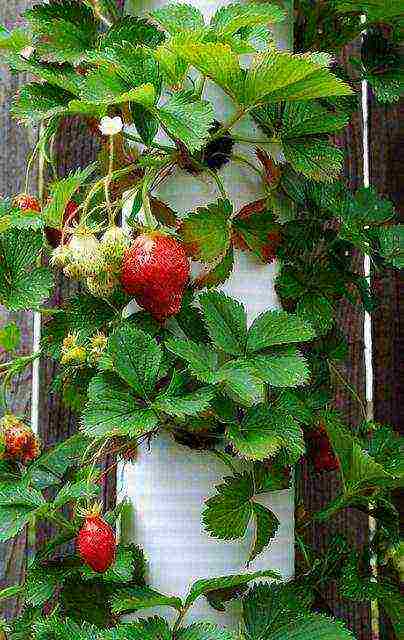
Correct fit
It is easy to grow berries by this method, the main thing is to do everything correctly when planting. First of all, take good land. You can buy it at the store. Another option is to prepare the soil yourself.To do this, add peat, wood ash and a little manure to the garden soil. Mix everything thoroughly, and then fill the pipes with soil. Experienced gardeners plant calendula next to the beds. It helps repel insects. Strawberry seedlings are planted in specially prepared holes. The mustache from the berries can be planted in free cells. In order for strawberries to grow well, they need to be looked after.
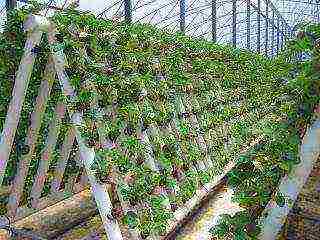
Berry care
It is possible to grow strawberries in a pipe only if the basic condition is met - proper planting care. This includes watering, fertilization and disease prevention. Make sure that the ground does not dry out. Use fertilizers for dressing that are rich in nutrients and trace elements. Watch out for the bushes. For the prevention and control of diseases, use special products that are sprayed with berries.
Collection and storage
If you have chosen the method of planting strawberries in plastic pipes, then you will never know what rotten berries that lie right on the ground are. Harvesting in this way will be much easier and easier for you. You do not need to crawl on your knees in the garden for half a day and look for strawberries among the greenery. Here you just need to take a container - and you can safely go to harvest. Storing strawberries directly depends on the selected variety. There are types that are ideal for making jam. Some varieties of berries are suitable for fresh consumption.

Finally
We have sorted out a very interesting planting method and now we know what a strawberry in a tube is. It is easy to grow it, and at times even easier than the usual way. Now you will collect a huge amount of crops and forget about what bad berries are. Using our master class, you can easily assemble the necessary structure, armed with the appropriate materials, tools and new ideas. If you are not attracted to vertical beds, you can arrange them horizontally. Then additionally install them on special legs. In this case, you can pick strawberries at your height and not bend over at all. It all depends on your imagination and the amount of free space. If you don't have enough of it, hang plastic pipes, and plant whatever your heart desires in the free space.
Strawberries are one of those crops for the cultivation of which, in the classic version, land space is not rationally used. Every gardener knows that planting in the usual way into the ground takes up a very large area, while the yield that can be harvested from this site is small. Therefore, planting strawberries in a pipe is aimed at increasing yields per square meter of land.
Vertical cultivation of strawberries
The use of vertical plants and structures for growing strawberries is a practical way to save land space. For arranging vertical flower beds and beds, you can use various commercially available designs, or make them yourself. One of these options, which is quite new to use, is the vertical planting of strawberries in a PVC pipe designed for sewer installation. Planting strawberries in a tube is already a proven and reliable method recommended by leading gardening experts.
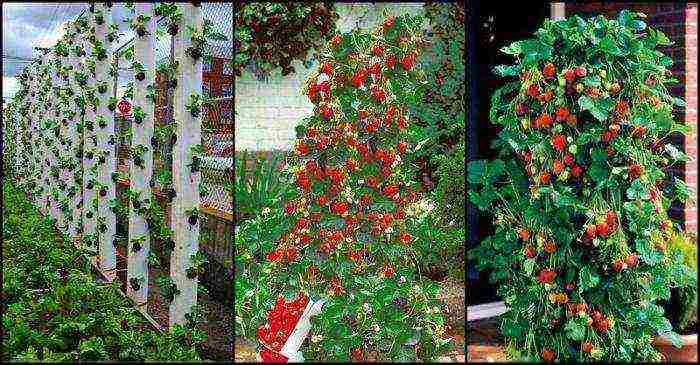
Materials for making
To make a vertical flower bed you will need:
- Cuts of PVC pipes of wide diameter.
- An electric drill, a wide hole attachment, or a conventional wood drill.
- Pipe plug.
- Narrow PVC pipe that is used to supply water to the roots of plants.
- Scotch.
- Knife and cork.
- Burlap for winding the irrigation pipe.
- Twine or twine.
- Soil mix.
- Gravel or expanded clay.
- Strawberry seedlings.
- Fasteners.
How to make a strawberry planting tube
If you decide to start planting strawberries in vertical pipe beds, decide on their height. It is necessary to measure the length of the pipe and cut it off by installing a plug on one side. In a thin pipe designed to moisten the soil, small holes are drilled on two-thirds of the entire surface. This is done to ensure that water flows mainly in the upper part of the vertical flower bed. In order for the lower plants not to become waterlogged, and the upper ones to receive a sufficient amount of water, the tube is wrapped in burlap and secured with twine or twine. This is to ensure that the strawberry roots do not penetrate the tube and disrupt the water supply system. A stopper is inserted into the lower end of the tube and secured with adhesive tape. The bottom is the side where there are no holes.
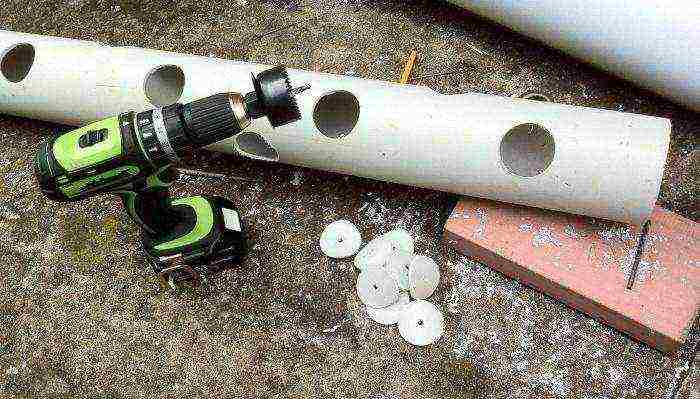
In a wide pipe, it is necessary to make windows with a large nozzle on a drill, or drill out their contours with a thin drill and cut them with a knife. These holes are located mainly on those sides that will face the light. On the side that will inevitably turn north, they will not be needed. The last holes are made at least 20 centimeters from the ground. The narrow watering tube is inserted into the main wide one and attached to it in any convenient way. The pipes are installed in a permanent location, unfolding with dimples towards the sunny side, and secured with clamps or other available fasteners.
The soil
Planting strawberries in a pipe involves the use of ready-made universal store soils or their own harvesting. To do this, it is necessary to mix in equal parts the usual garden soil, peat, turf. For air permeability of the soil, sand and sawdust are added. Also, ash must be added to the prepared mixture for growing strawberries, which prevents rotting, since strawberries have a superficial, rather delicate root system.
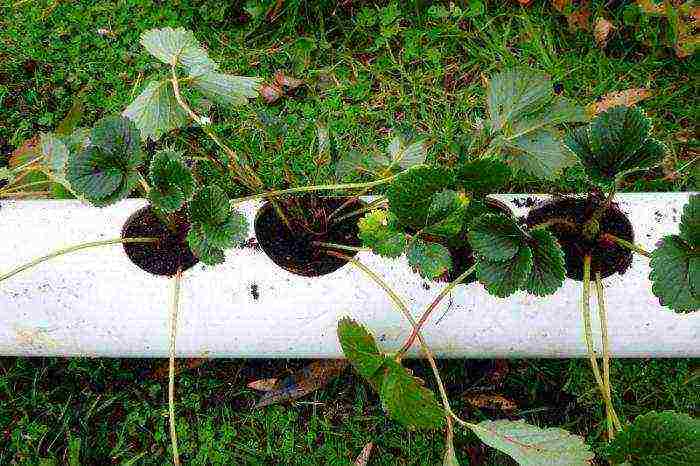
For planting strawberries, the land on which crops such as strawberries, raspberries, tomatoes or potatoes were grown in the previous 2-3 years is not suitable. This contributes to the transmission of diseases that are characteristic of these plants. Also, humus or manure can be added to the earthen mixture in small proportions. The pipes are filled 10 centimeters from the bottom with coarse gravel or any other suitable material to create good drainage. The soil mixture is poured from above and slightly compacted to the very top.
Planting strawberries in tubes
Plants such as marigolds or marigolds are placed in the lower holes of the pipe. These flowers ward off pests well, preventing them from reaching the strawberry plants. If varieties are planted that reproduce by retraction of the antennae, then the plants can be planted through one hole in order to further guide the antennae into free holes, where they will root. Planting strawberries vertically in a tube involves carefully placing the plants in an unusual position. You can fill the pipe with soil in advance and then make small depressions in it with your fingers to plant seedlings or place plants in stages, filling them with earth.
This is how planting strawberries in a pipe looks like (photo below).
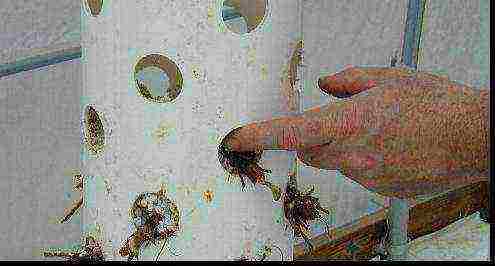
Care for strawberries in pipes
It is quite simple and differs little from the usual one when growing a plant in soil. This is timely watering, periodic feeding and disease prevention. Water is supplied to the irrigation pipe. For convenience, at the end of it, towering above the bed, you can place a watering can with a wide neck. The tube is filled completely, to the top. It gradually releases water through the stretched burlap and the earth compacted around it. With good drainage, there is no need to worry about overflowing plants. It is easy to determine the condition of the soil, for this you just need to feel it with your fingers in the holes where the strawberries are planted. It does not tolerate drying out of the soil, so constant moistening should be carried out.
Feeding strawberries is carried out during the period of active growth and flowering. When the fruiting period begins, feeding is stopped. Foliar feeding with microelements is most effective. For this, a mixture of boric acid, zinc sulfate, cobalt nitrate and manganese sulfate is used. To prepare a solution, these substances are taken in equal proportions and mixed with water in an amount of 0.025%. As a root top dressing, universal fertilizers are used, as well as solutions of mullein or bird droppings.
If strawberries are planted in pipes, wintering in such conditions differs little from soil. However, the advantage of this technology is that these beds can be wrapped with improvised materials or brought into a covered room.
Vertical cultivars
Planting strawberries in pipes involves the acquisition of high-yielding varieties that are resistant to most plant diseases and pests. The ripening time does not really matter, since the pipes are easy to install not only outdoors, but also in greenhouses or greenhouses. The most productive varieties are considered: "Pomegranate", "Zagorie", "Roksana", "Early Makheraukha", "Desnyanka", "Pavlovchanka". And also varieties of foreign producers: "Gigantella," Bogota "," Cardinal "," Troubadour ".
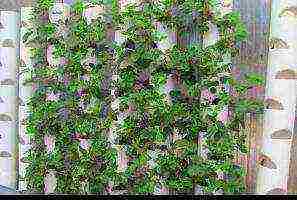
Pest and disease control
The most common pest on strawberry seedlings is the transparent strawberry mite, which damages the leaves. It is easy to identify, since when it appears, the strawberry leaves curl and turn yellow, and the berries on the bushes become small. To combat it, spraying with karbofos is used. For this, a solution is prepared: for 10 liters of water, 3 tablespoons of karbofos. This treatment also eliminates insects such as the weevil, strawberry beetle and whitefly.
Also, strawberries are often attacked by the Colorado potato beetle and the larvae of the May beetle, which must be removed from the plant. It is undesirable to use chemicals to control these pests, as they are long lasting and are not suitable for strawberries, which ripen quite quickly.
Slugs, millipedes, and snails can become pests for strawberries. Most often, they settle on plants when the soil is waterlogged. You need to fight them with the help of the drug "Metaldehyde". It is a granular powder that does not need to be dissolved in water. Its granules are spread over the soil.
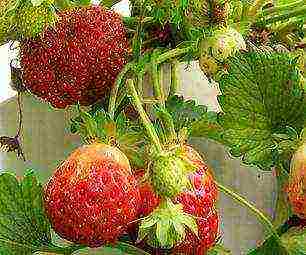
Planting strawberries in a pipe has long established itself as a rational method of using the usable area and obtaining high yields from every square meter. This method is quite cheap and affordable even for a novice gardener.
